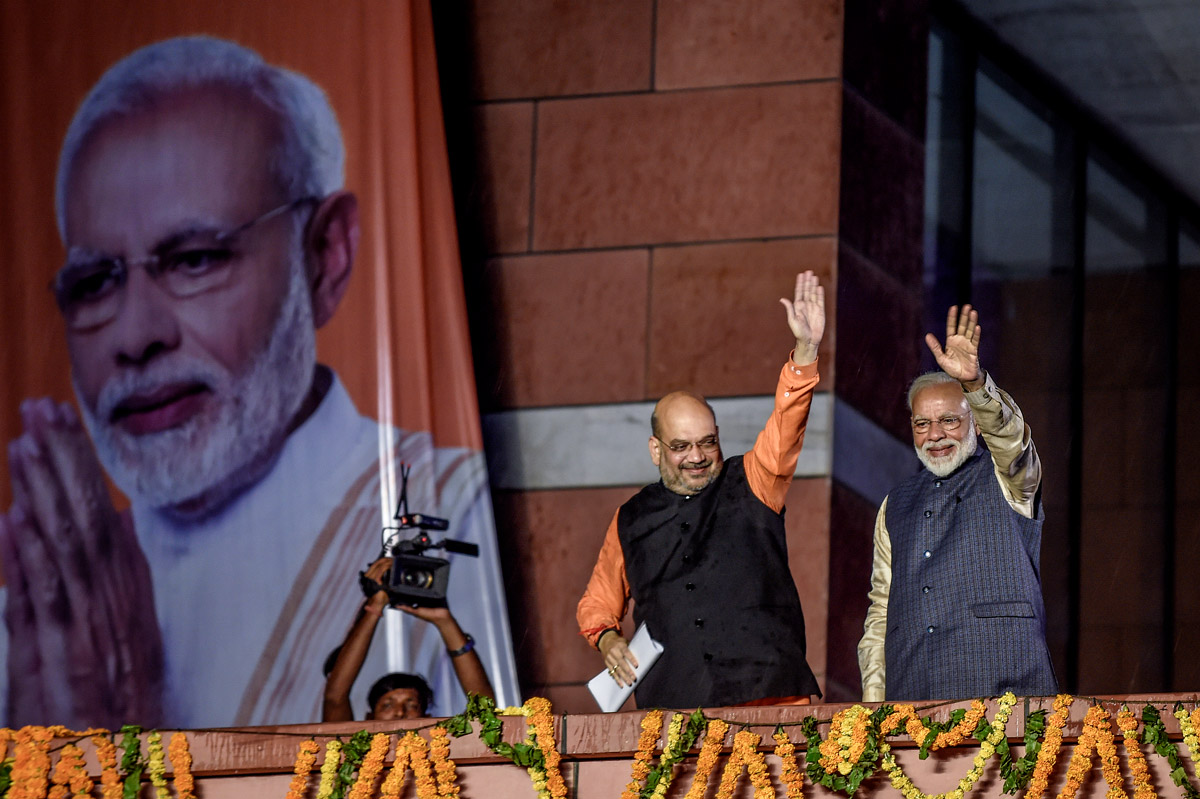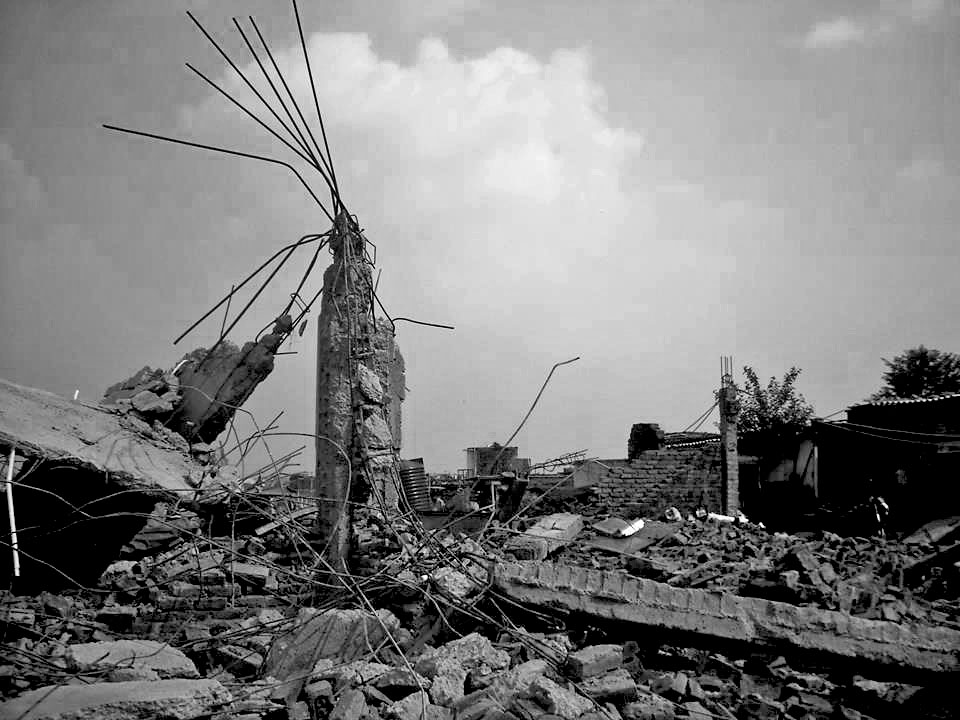Journalist Rana Ayyub was recently threatened on Twitter by a police department in India with “legal action” for making a “political comment” and was ordered to delete her tweet. She had posted an innocuous statement on the impact on Muslims of the destruction of the Babri Masjid (mosque) in Ayodhya in 1992 by Hindu fundamentalists, and on her hope that the Supreme Court of India would provide a modicum of justice the following day in a widely anticipated, politically charged verdict.
While the Amethi police department eventually deleted the tweet after an outcry, a cavalcade of Hindu right-wing commenters did not go away. They claimed she was inciting religious violence, tagged multiple Indian police departments claiming she was violating communal (religious) harmony, and amplified genocidal thought against Muslims.
Ayyub is a frequent target, receiving death and rape threats for years, to the point where UN officials felt the need to intervene by calling on the Indian government to protect her. But she was far from the only one on Friday. The swarming behavior of the online Hindu right and their appeals to police Twitter accounts to harass Muslims and dissenters were widespread.
The story of how India came to this point isn’t just one of bigotry and state violence, but also of the failures of capitalism in a state that turned away from socially conscious populism toward an increasingly pro-business set of policies in the neoliberal era. But to understand its particular context with respect to what happened to Ayyub and others, we have to go back to the 1980s and 1990s.
The Hindu right believes the site of the Babri Masjid was the birthplace of Ram, a mythological figure they revere. Without objective, impartial evidence, they also claim that a Hindu temple once stood on the site before, they say, it was torn down by the Mughals five centuries ago. After years of antagonism, in 1992 they sent 150,000 cadre to illegally enter and destroy it.
The incident sparked extensive violence against religious minorities across India and the region. Thousands were attacked or killed in India and Bangladesh, and numerous other religious sites were desecrated, mostly Muslim in India, mostly Hindu in Bangladesh and Pakistan.
But the Hindu right didn’t want to just destroy the mosque; they wanted to build a Hindu temple on the remains. Meanwhile, Muslim institutions rightfully wanted to rebuild a mosque on the site. And so it went to the courts.
The Supreme Court of India recently sided with the Hindu right. It handed the site of the destroyed mosque over to a trust to build the temple to Ram. Following the decision, preemptive curfews were imposed in Mumbai, Bangalore, and elsewhere prohibiting the gathering of five or more people. This continued the policing of the public — particularly Muslims and dissenters — by the government and its Hindu right supporters that had begun before the verdict was handed down.
The Supreme Court’s decision provided judicial validation for one of the most incendiary acts of religious desecration in modern Indian history. It is unfathomable that five judges could come to the conclusion that the very force that demolished the mosque should be legally entitled to build a Hindu temple on its ruins. What the Supreme Court decision on the Babri Masjid shows is that Hindu right-wingers have captured the state’s institutions at deeper than just an electoral level.
In all likelihood, so too does the work of the government archaeological department that the court relied on. The survey, which has not yet been released, claimed to find evidence of the alleged lost Hindu temple. Previous research by the Archaeological Survey of India on the site has been contested by historians as well as other archaeologists brought in by a Muslim institution claiming the site.
All of this is a stark break from India’s secular tradition. Secularism in post-independence India was always different from the ideas of secularism in the United States or France, for instance. For India, secularism meant the balancing of interests of different religious forces by the government and respect for all of them. At its best, it was about promoting tolerance and harmony among the people.
At its worst, though, it pushed Indians to primarily identify as members of rigid religious “communities” rather than by their social position as lower caste, or farmers, or workers, or women. For example, India’s treatment of secularism has allowed the Hindu right to obscure the widespread institutionalized sexism and gender violence that undermine women across religious lines by focusing on anti-women provisions in Muslim family law. (India has separate laws governing marriage, divorce, adoption, and inheritance for four religious communities: Muslims, Hindus, Christians, and Parsis.) It similarly fostered a continued flattening of the enormous differences within religious communities.
But this version of secularism made some sense as a political strategy when you consider the powder keg of institutionalized religious animosity that the British fostered over hundreds of years and left behind in South Asia. Their tactics on this front, collectively known as “divide and rule,” ranged from redefining the population by religious identity through the census, to separate electorates for Muslims and Hindus, to setting the precedent for partitioning territory along religious lines in 1905.
Given this context, much organizing during the nationalist movement took on a religious hue, led by key figures like Mohandas Gandhi and Muhammad Ali Jinnah. The result — the last gift of the British as they handed over political control to the native elites they had cultivated — was the creation of national states on the basis of majority religious community — Pakistan for Muslims, India for Hindus.
Enormous social violence stemmed from resulting population transfers, killing over one million people during the partition into two states (later to become three with the independence of Bangladesh). The region will likely never recover from this original sin, hardened into national boundaries in the capitalist nation-state system, and provided with armies and nuclear weapons.
The lasting impact of the violence of partition on social consciousness — including on the left — can’t be overstated. By channeling social militancy into a liberal, communal framework, the trauma of partition foreclosed on any possibility of a leftist revolution in India at independence, notwithstanding important exceptions. Consequently, there was no deep land reform on a nationwide basis, as in China, or other sizable redistribution of assets and power to the majority poor. Parties on the revolutionary left faced a choice between state repression and oppositional electoral politics.
Continue reading

